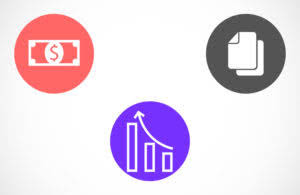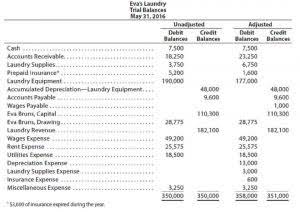Discounted Payback Period Calculator
It uses the predicted returns from the investment, but also takes into consideration the diminishing value of future returns. The initial outflow of cash flows is worth more right now, given the opportunity cost of capital, and the cash flows generated in the future are worth less the further out they extend. When considering allocating funds toward a given project, a company or investor naturally wants to know how long it will take for the cash flows generated from the project to cover the initial costs. Let’s say you’re considering investing in a project that has an upfront cost of $10 million and it’s expected to generate $2 million of additional revenue each year.
Shorter discounted payback periods are better, as they indicate less risk and quicker recovery of investment costs. To begin, the periodic cash flows of a project must be estimated and shown by each period in a table or spreadsheet. These cash flows are then reduced by their present value factor to reflect the discounting process. This can be done using the present value function and a table in a spreadsheet program. If you have a cumulative cash flow balance, you made a good investment.
Currency Calculators
A general rule to consider when using the discounted payback period is to accept projects that have a payback period that is shorter than the target timeframe. Payback period doesn’t take into account money’s time value or cash flows beyond payback period. Assume that Company A has a project requiring an initial cash outlay of $3,000. The project is expected to return $1,000 each period for the next five accounting software home periods, and the appropriate discount rate is 4%. The discounted payback period calculation begins with the -$3,000 cash outlay in the starting period. Next, assuming the project starts with a large cash outflow, or investment to begin the project, the future discounted cash inflows are netted against the initial investment outflow.
The discounted payback period, in theory, is the more accurate measure, since fundamentally, a dollar today is worth more than a dollar received in the future. Therefore, it would be more practical to consider the time value of money when deciding which projects to approve (or reject) – which is where the discounted payback period variation comes in. While discounted payback period is an important metric to use in assessing investments, it’s certainly not the only financial metric you should consider. If we didn’t consider the time value of money and instead applied the standard formula, our payback period would be 5 years. That’s a significantly shorter period of time than 7.28, so you can see how the application of the principle of the time value of money can dramatically affect investment decisions.
How do you calculate the discounted payback period?
The discounted payback period process is applied to each additional period’s cash inflow to find the point at which the inflows equal the outflows. At this point, the project’s initial cost has been paid off, with the payback period being reduced to zero. Discounted payback period refers to time needed to recoup your original investment. In other words, it’s the amount of time it would take for your cumulative cash flows to equal your initial investment. The period of time that a project or investment takes for the present value of future cash flows to equal the initial cost provides an indication of when the project or investment will break even.
Make smarter more informed finance decisions
- The discounted payback period is a capital budgeting procedure used to determine the profitability of a project.
- This makes it a good choice for decision-makers who don’t have a lot of experience with financial analysis.
- When considering allocating funds toward a given project, a company or investor naturally wants to know how long it will take for the cash flows generated from the project to cover the initial costs.
- Depending on the time period passed, your initial expenditure can affect your cash revenue.
- Once you have this information, you can use the following formula to calculate discounted payback period.
The discounted payback period is a capital budgeting procedure used to determine the profitability of a project. A discounted payback period gives the number of years it takes to break even from undertaking the initial expenditure, by discounting future cash flows and recognizing the time value of money. The metric is used to evaluate the feasibility and profitability of a given project. Payback period refers to how many years it will take to pay back the initial investment. The simple payback period doesn’t take into account money’s time value. The shorter a discounted payback period is means the sooner a project or investment will generate cash flows to cover the initial cost.
It’s not a calculation of your total expected return, but it only indicates how long it will take to break even on an investment. Compared to the standard payback period calculation, discounted payback period is more complex and first requires a discount rate to be established. Despite these limitations, discounted payback period methods can help with decision-making. It’s a simple way to compare different investment options and to see if an investment is worth pursuing.
Specialties include general financial fasb makes a second effort to improve balance sheet debt classification planning, career development, lending, retirement, tax preparation, and credit.







